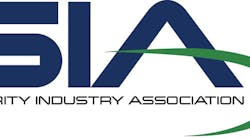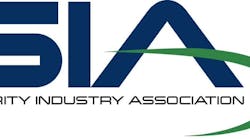To say the United States Congress has been slow to react to the rash of gun-related school shootings over the last decade would be a mild understatement. The languid pace at which the House and Senate have chosen to address the issue of school security at both the K-12 and university level has angered victim’s families, education officials and law enforcement professionals across the spectrum as all parties wondered what the tipping point to action would eventually be.
Unfortunately, it came much too late for 17 students and teachers at Marjory Stoneman Douglas High School in Florida. On February 14 of this year, a former student pulled off one of the deadliest school shootings in U.S. history as he used an AR-15 rifle to kill his victims. But apparently, the tipping point had been reached. Almost immediately after the classmates and parents had buried their loved ones and friends, Stoneman Douglas students united in an unprecedented show of solidarity campaigning for immediate gun control legislation and establishing the “Never Again MSD” advocacy group. Articulate and impassioned students from South Florida began to appear on America’s cable news networks, at well-organized rallies and town halls to beat the drum for gun control and enhanced school security.
The Security Industry Association (SIA) has been a prime catalyst in moving school security through the Federal government gauntlet since 2008. SIA, along with stakeholders representing the law enforcement and education communities including The School Superintendents Association (AASA), the National School Boards Association (NSBA), the Fraternal Order of Police (FOP), the International Association of Campus Law Enforcement Administrators (IACLEA) and other like-minded organizations worked to support the reviving of this grant assistance, particularly in the aftermath of the attack on Sandy Hook Elementary in 2012.
But until the political rhetoric subsides, it will be up to the individual school districts to chart their own security and safety roadmap.
“Until the issues of gun control, more funding for schools, and increased on-site police protection are sorted out, we, as a society must acknowledge that this may be the norm for now,” says Carol Borow, President of CHB Industries, a company that provides schools and other facilities security and anti-graffiti window film solutions.” But there are steps schools and school boards should take to minimize damage, reduce injuries, and eliminate the loss of lives. In short, plans can be developed to identify threats and to buy time for first responders to arrive on the scene.”
However, Borrow stresses that the first element of such a plan is forming a team of professionals from law enforcement, security technologies, engineers, architects, builders and security window film and glazing experts so they can coordinate a “layered” approach to securing a school - from the outside in, addressing issues of standoff distance, access control, window and door vulnerability and, ultimately, “safe room” provisions for sheltering in place.
While she adds that each school requires a custom plan, here are the components of a basic security plan providing added security for everyone who enters:
- Define the threat based on the layout and location of the school, the frequency of occupancy and crowd density; try to determine those areas most at risk, and what is the most likely threat posed to them. These could be hallways, lunchrooms, gymnasiums.
- Analyze the obvious weak points like doorways, as well as the ground floor windows -- particularly those that may be out of a clear line of sight from public roads and sidewalks. Other points to consider:
- Real-time cameras covering the perimeter of a school will provide immediate, vital information.
- Hardening entry doors and ground level window and door glass are effective in slowing forced entry.
- Hardening upper-level windows can secure building occupants against glass-shrapnel injury in the event of a blast from a small nearby bomb.
- Administrative, security and custodial staff and your local police must have up-to-date floor plans with clearly, logically identified locations of all entries, stairs, elevators, rooms and lavatories. Those locations should be labeled with photo-luminescent signage, so they are easily identified, even in the dark.
- Remove hedges, bushes, garbage cans and other obstacles which provide cover for an intruder or an explosive device.
- Fortify entry vestibule with lock-down capabilities in the event an intruder breaches the perimeter entry.
- Consider adding safe exits from areas where large crowding is likely to occur, such as lunchrooms, corridors, and other public assembly areas.
Jake Parker, SIA Director of Government Relations, adds that the ultimate goal SIA and its partners are working towards is ensuring that each of the more than 100,000 K-12 school in America achieves at least a basic level of security, supported by best practices and sensible standards. For more information on SIA’s Partner Alliance for Safer Schools (PASS) go to http://passk12.org/.







